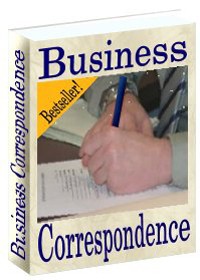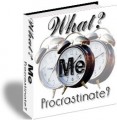 License Type: Private Label Rights
License Type: Private Label Rights  File Size: 552 KB
File Size: 552 KB File Type: ZIP
File Type: ZIP
 SKU: 26450
SKU: 26450  Shipping: Online Download
Shipping: Online Download
Ebook Sample Content Preview:
After attention has been secured, you must lead quickly to your description and explanation; visualize your product and introduce your proof, following this up with arguments. The art of the letter writer is found in his ability to lead the reader along, paragraph by paragraph, without a break in the_ POINT of CONTACT _that has been established. Then the proposition must be presented so clearly that there is no possibility of its being misunderstood, and the product or the service must be coupled up with the_ READER’S NEEDS
After you have attracted attention and stimulated the interest of the reader, you have made a good beginning, but only a beginning; you then have the hard task of holding that interest, explaining your proposition, pointing out the superiority of the goods or the service that you are trying to sell and making an inducement that will bring in the orders. Your case is in court, the jury has been drawn, the judge is attentive and the opposing counsel is alert—it is up to you to prove your case.
Good business letter, consciously or unconsciously usually contains four elements: description, explanation, argument and persuasion. These factors may pass under different names, but they are present and most correspondents will include two other elements—inducement and clincher.
In this chapter we will consider description, explanation and argument as the vehicles one may use in carrying his message to the reader.
An essential part of all sales letters is a clear description of the article or goods—give the prospect a graphic idea of how the thing you are trying to sell him looks, and this description should follow closely after the interestgetting introduction. To describe an article graphically one has got to know it thoroughly: the material of which it is made; the processes of manufacture; how it is sold and shipped—every detail about it.
There are two extremes to which correspondents frequently go. One makes the description too technical, using language and terms that are only partially understood by the reader. He does not appreciate that the man to whom he is writing may not understand the technical or colloquial language that is so familiar to everyone in the house.
For instance, if a man wants to install an electric fan in his office, it would be the height of folly to write him a letter filled with technical descriptions about the quality of the fan, the magnetic density of the iron that is used, the quality of the insulation, the kilowatts consumed—“talking points” that would be lost on the average business man. The letter that would sell him would give specific, but not technical information, about how the speed of the fan is easily regulated, that it needs to be oiled but once a year, and costs so much a month to operate. These are the things in which the prospective customer is interested.
Then there is the correspondent whose descriptions are too vague; too general—little more than bald assertions. A letter from a vacuum cleaner manufacturing company trying to interest agents is filled with such statements as: “This is the best hand power machine ever manufactured,” “It is the greatest seller ever produced,” “It sells instantly upon demonstration.” No one believes such exaggerations as these. Near the end of the letter— where the writer should be putting in his clincher, there is a little specific information stating that the device weighs only five pounds, is made of good material and can be operated by a child. If this paragraph had followed quickly after the introduction and had gone into further details, the prospect might have been interested, but it is probable that the majority of those who received the letter never read as far as the bottom of the second page.








